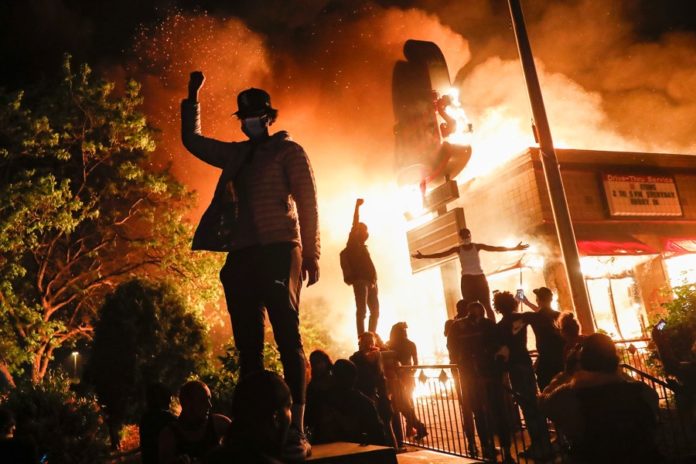June is here, and so is the fire and brimstone.
America’s major cities burned this weekend as peaceful protests quickly turned violent. The murder of George Floyd – an African American man – at the hands of Minneapolis law enforcement sparked an outcry for police reform.
Now, rioters have turned major metropolitan areas into walking hellscapes at night. Even the National Guard has been deployed in select locations to keep the peace.
Thus far, the rioters have destroyed millions of dollars worth of property. Well-intentioned demonstrators and police alike have been unable to stop them.
In response, stocks are trading flat. President Trump announced on Friday that Hong Kong would no longer receive special treatment from the U.S. government now that China has its hooks in the special administrative region.
What he did not mention, however, were any sanctions against Beijing for its recent actions.
That sent stocks soaring at the end of last week’s final trading session.
To many analysts, though, it’s not cause for celebration. The president very deliberately left the door open for future penalties.
That’s got Art Hogan, chief market strategist at National Securities, concerned about the rally moving forward.
“Nothing that has happened since the market closed on Friday has been market positive,” Hogan said.
“When you think about it, clearly we’re beginning to take U.S.-China tensions seriously and you add on to that the massive amount of disruption going on in almost every major city in the country right now, none of that could be seen as market positive.”
He continued, adding:
“At the levels we’re at, I wouldn’t be surprised to see the market take a pause and pull back.”
Other experts are still pointing to COVID-19 as a major limiter for stocks. As the U.S. continues to reopen, the emergence of a second wave of infections could prove disastrous for bulls.
“The main downside risk facing stocks is a second wave of the disease,” Peter Berezin, chief global strategist at BCA Research, said.
“If fears of a new outbreak were to escalate, risk assets would suffer.”
Several vaccines are currently in the works. Many have already shown promise.
That doesn’t mean, however, that the world will have one any time soon. Berezin argues that testing, not a vaccine or treatment solution, might be enough to provide support to the beaten-down U.S. (and world) economy.
“Even if a vaccine does not become available later this year, increased testing should allow for a more economically palatable approach to containment strategies,” Berezin said.
This morning, Russia announced that it may have a possible COVID-19 treatment in an anti-influenza drug called Aviifavir. The Russian government has approved the drug and will start delivering it to hospitals later this month.
“It’s a major, major step forward,” RDIF CEO Kirill Dmitriev said in a pre-market interview.
“We believe there are now only two antiviral drugs against the virus that are really effective, those are remdesivir, done by the U.S., and this favipiravir, which also has significant promise.”
As more treatment options become available, the path to recovery – both economically and medically – becomes much more realistic.
But investors need to remain cautious. Bulls in particular.
An economic recovery, though rapid by comparison to recoveries of the past, might still take years to fully develop. Over 40 million Americans are out of work. A large number of those jobs simply won’t come back when the U.S. completely reopens.
The market certainly isn’t doomed long-term, but if bulls continue to get ahead of themselves, a sobering realization of the true state of the economy could bring equities screaming back down to earth.
All while civil unrest and U.S.-China tensions potentially boil over, heading into what should be a contentious presidential election.








